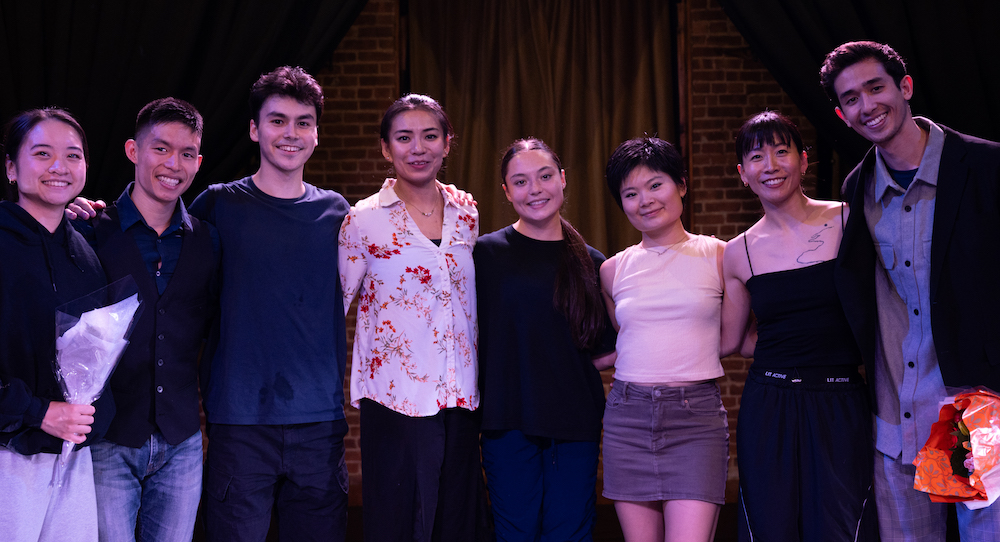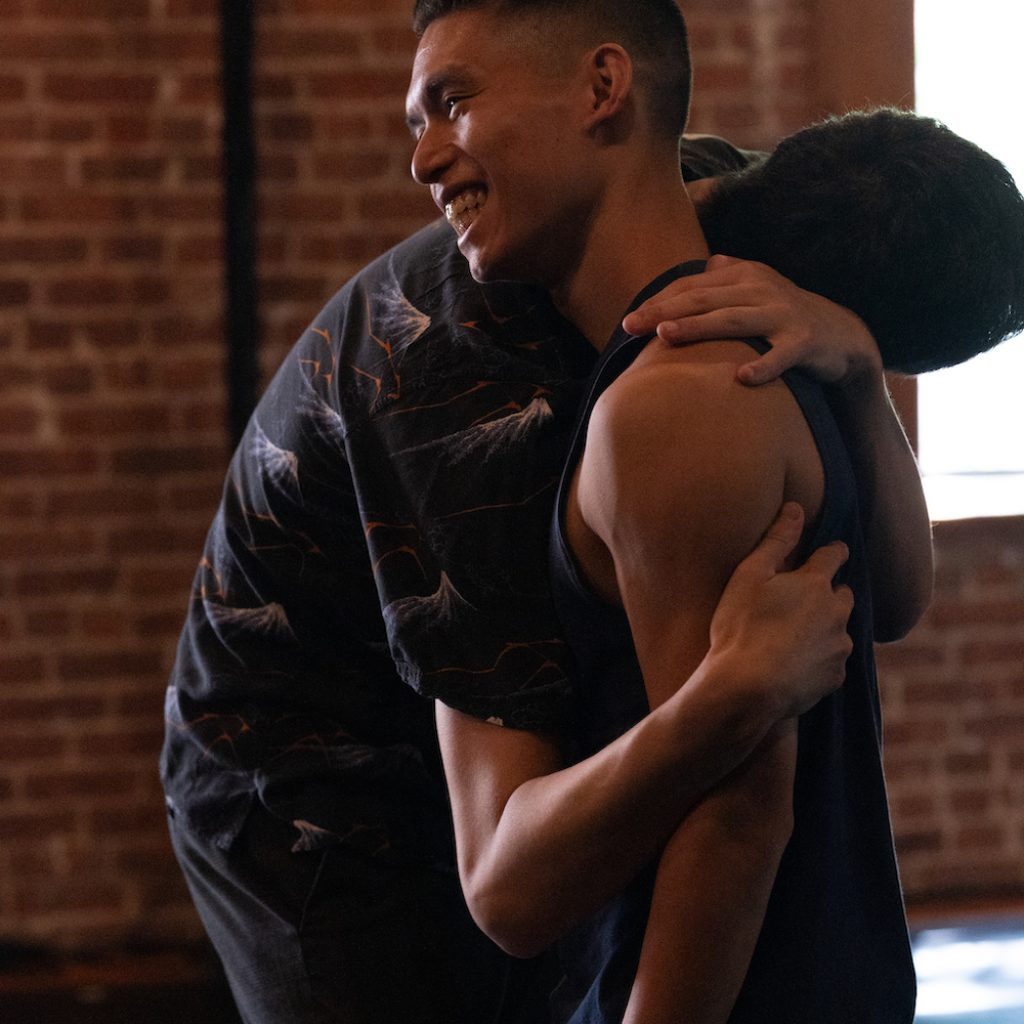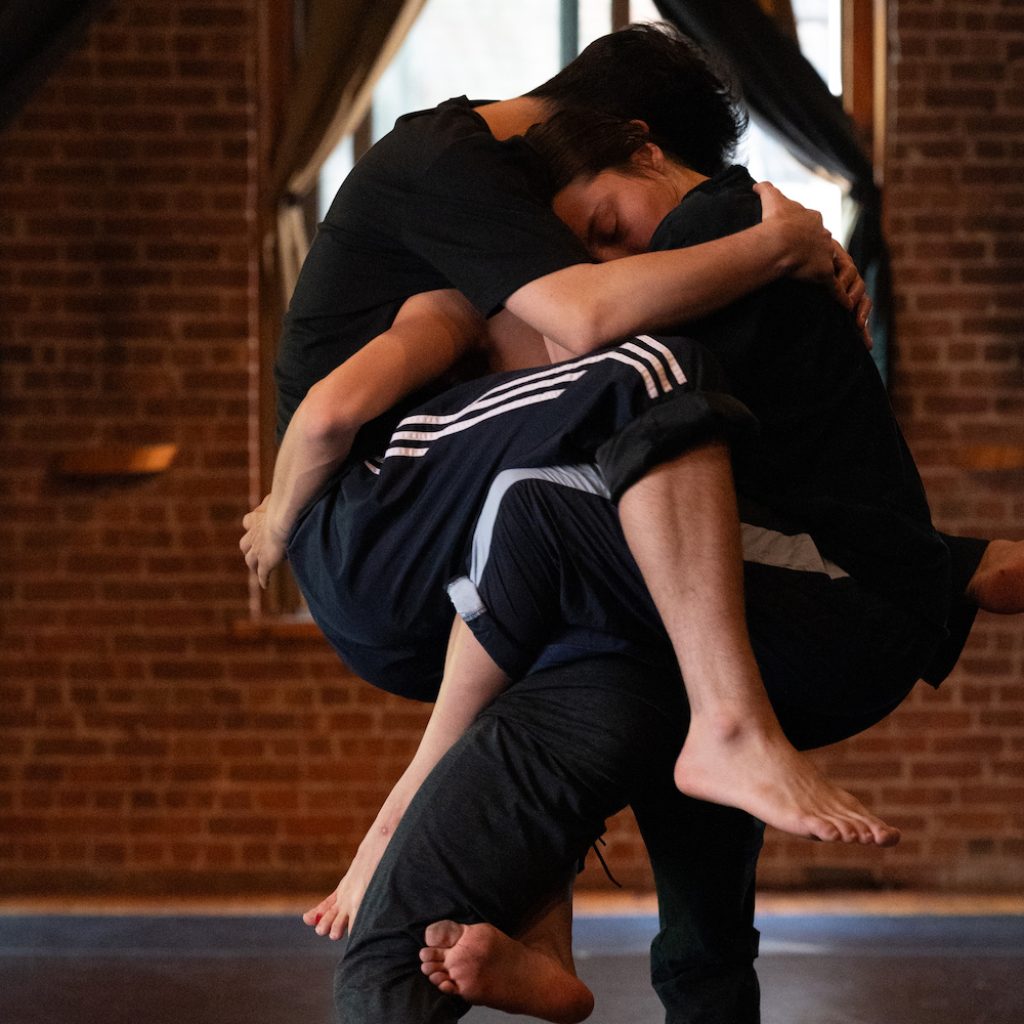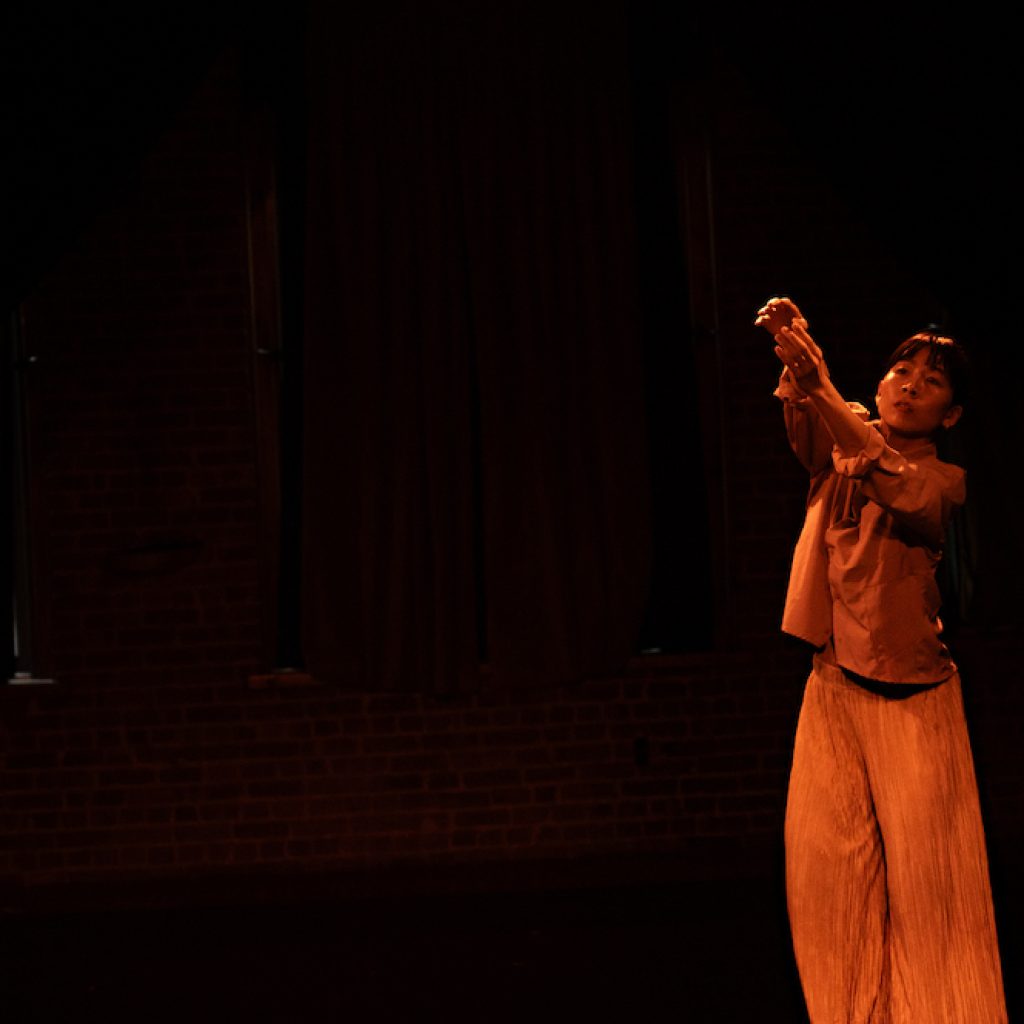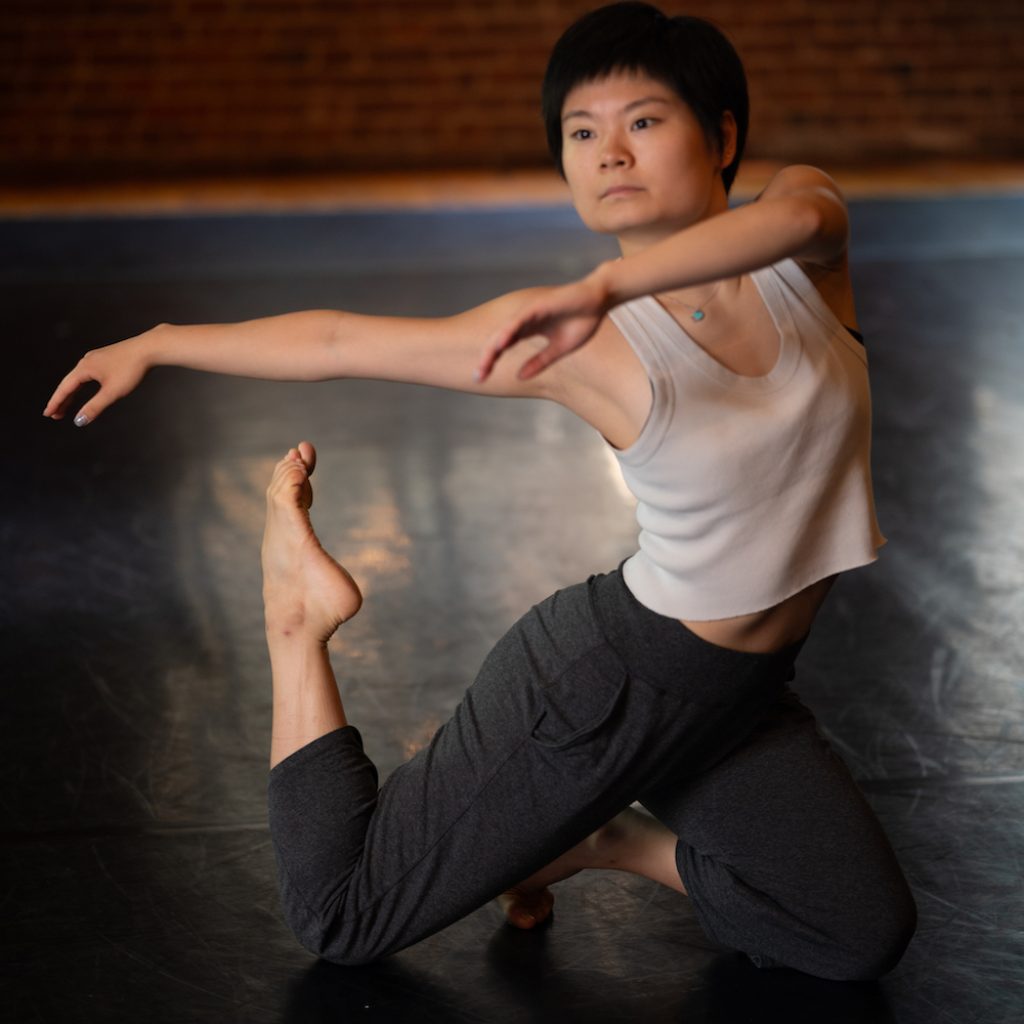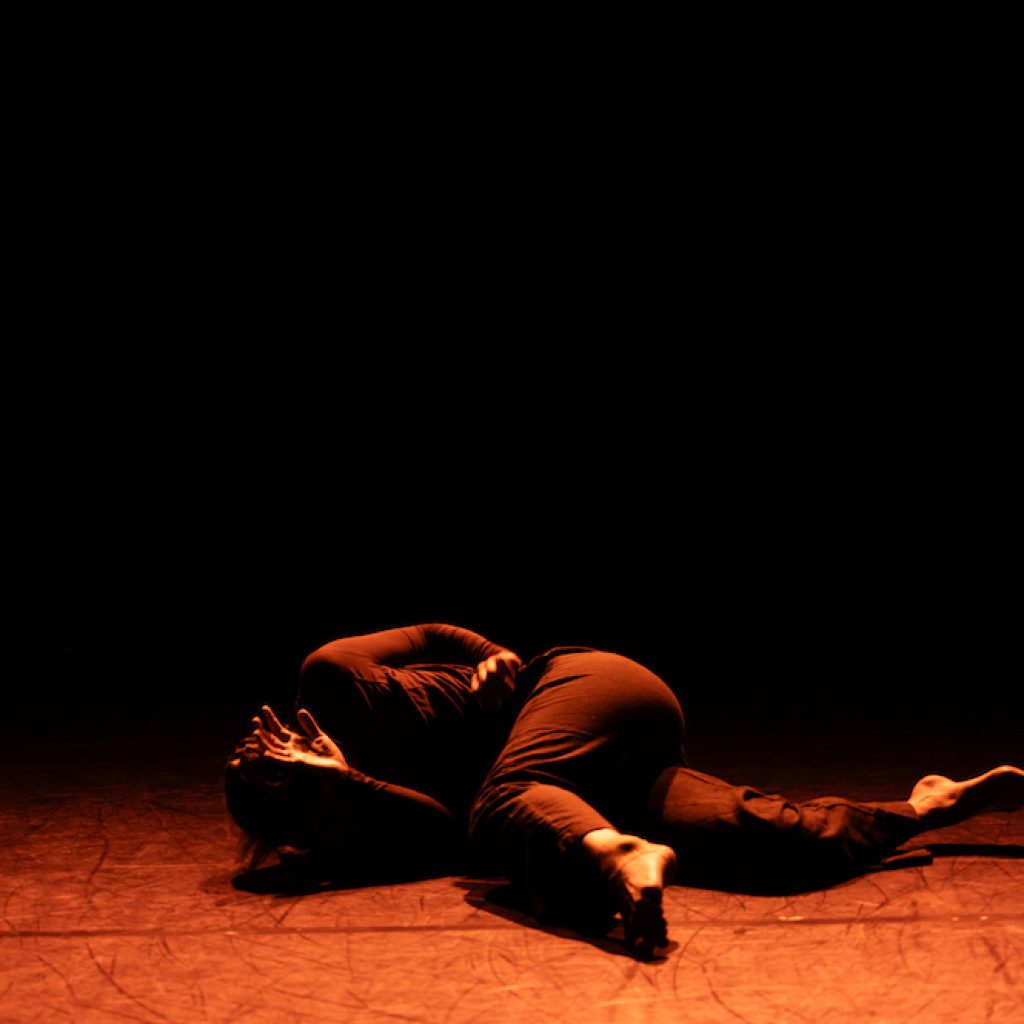Jesse Obremski, a Japanese-American dance artist and choreographer based in New York City, is driven by the “why,” by community, and the summation of his works thus far is based on personal experience and explorations. Obremski has been a member of the Gibney Company, Lar Lubovitch Dance Company, the Limón Dance Company, and is currently working as a dancer with the Alvin Ailey American Dance Theater.
And, as a self-proclaimed “workaholic,” Obremski formed his own company, Obremski/Works, in 2018. He describes the now non-profit as an Asian American and Pacific Islander (AAPI), equity-minded organization, and the company’s first full-evening performance this past May featured four works celebrating AAPI artists. In addition to bringing these voices to the forefront, Obremski/Works also offers Annual Visa Support Workshops for individuals going through the visa application process.
Here, Dance Informa chats with the inspiring Obremski more about his organization, his mission, and what’s next for Obremski/Works and the company’s advocacy work.
When and why did you want to form your own company?
“I founded Obremski/Works in 2018, with Associate Founders Terrence D.M. Diable and Michael Greenberg. Our first work was a dance film, which also has a live version, entitled No Words in collaboration with The Roof Films and Obremski/Works partner and composer Trevor Bumgarner. No Words is a work that references the growth of gun violence in America and stems from the activism of gun control. The company originally started as a choreographic hub for my work. In 2021, after the AAPI hate crimes, I found a new vision for the company to continue our artistic advocacy and gear it more toward supporting AAPI individuals. This was when we started to build our advocacy support fellowships. I saw that Obremski/Works could be a space to enhance AAPI representation, voices and artistry in our contemporary world.”
How would you describe your choreographic style? It seems to combine elements of contemporary dance with lots of floorwork, street dance styles, gestural work, dance theater. What are your influences, and how would you describe your style to others?
“I believe my choreographic style to be a melting pot of my physical explorations as a performing artist, my innate choreographic tendencies and my imagination toward different ideologies that the body can explore. I am drawn to movement languages like Limón and Gaga, as there are similarities that allow the body to utilize action words, sensations and connection (to oneself or others). I am also very influenced by the artists in the space as vibrant collaborators and contributors to each work. When I start a new creation, I rarely have set material already created, as I want to feel the energy of the space to influence the physicality. As a singer and musician, I am also drawn to the different timbres and phrasing of music, whether tonal, sounds, silences, etc, which is why I appreciate collaborating with composers. All of these different influences contribute to the contemporary explorations which may be through ‘floorwork, street dance styles, gestural work, dance theater’ and more, though they stem from a variety of movements and explorations to influence the language of the creation(s).”
Can you share a bit about your company’s mission in celebrating AAPI voices and culture? Did you feel this representation was missing in the current dance scene, and why do you think it’s so important to share these voices?
“I first developed Obremski/Works, in 2018, as a choreographic hub of my work, but in 2021, after the AAPI hate crimes, I founded a new vision and mission for the company to be an equity-minded organization. In the fall of 2023, Obremski/Works also became a non-profit organization, moving toward the sustainability of our programming in support of AAPI individuals. All of our creations and future commissioned choreographers will be with people of AAPI descent. Our performing artists will also be individuals of AAPI descent, barring some guest artists here and there. I won’t say that I felt AAPI representation was missing in the arts field, but I felt it was lacking and exemplified the minority status AAPI individuals feel within society. Some great individuals are doing work in support of AAPI individuals. I wanted, and want, to have Obremski/Works enhance the cultural diversity of our arts field and go the extra mile in giving toward our communities’ growth and representation.”
We noticed you offer Annual Visa Support Workshops. Can you tell us about this offering?
“Our Annual Visa Support Workshops are gatherings where individuals can connect with lawyers and others who have gone through the visa application process in an effort to demystify the process and share support with them. We primarily concentrate the support toward 0-1b visas though are not isolating the support toward only that visa type. This workshop series came to be after the creation of our second AAPI Support Fellowship: The VOYAGER Fellowship. The VOYAGER Fellowship stems from the deep empathy of those who go through the visa application process. As a born and raised New Yorker myself, there is a privilege on a variety of levels because I have U.S. citizenship, and after learning about the visa application process, its expenses, the emotional toll it can bring on international artists and much more, I felt Obremski/Works could be an organization to support. The fellowship supports them with $1,000 financial reimbursement toward their visa application and other resources to guide them through the process. Even though The VOYAGER Fellowship supports one international artist annually, I knew that the need was much greater which is why the Annual Visa Support Workshops were created.”
What do you look for in your company dancers? Do you hold auditions or hire dancers you have worked with in the past?
“I have not yet been in a place with Obremski/Works to have auditions for an upcoming performance series. I am very interested in this for the future because there are incredibly talented individuals and artistic advocates in the world that I may not yet have the opportunity to connect with. For the past Obremski/Works performances, I have connected with individuals that I have known for several years as well as people who I have seen dance many times. Of course, I am looking for incredibly collaborative artists who understand their body, their artistry and their focus, but I am also drawn to individuals who are advocates in their own ways and people who understand why they dance.”
Are you still performing with other companies? What are some challenges that come with doing both? Or what are any advantages to being a director for your own group and being a dancer for someone else?
“Yes, I am still performing with other companies. I currently am working as a dancer with the Alvin Ailey American Dance Theater. As a self-proclaimed workaholic, I appreciate the multifacetedness of performing, choreographing, curating, directing, advocating, producing and more. It is an incredible challenge that I often need to check in with myself about. I need to be very clear with my schedule (thank you, Google Calendar) and as I do this more and more, I understand what my capacities are, as well as how they can grow, and I get to see certain aspects of producing a show/company where I am not as strong in. This is why I absolutely cannot do this work without administrative collaborators. The Obremski/Works team and artists like Jie-Hung Connie Shiau, Richard Sayama, Michael Greenberg, the board and advisory board have been a strong sounding board as a team for the work. I can’t do this alone (and I don’t want to).”
What’s next for you and Obremski/Works?
“Sustainability. I believe for arts organizations in our 21st century, honest sustainability can truly be the cornerstone toward longevity for the company, and in Obremski/Works’s case our advocacy work. I believe sustainability doesn’t necessarily only mean financial. Yes, of course making sure that Obremski/Works is financially viable but also understanding sustainability toward a balanced sense of artistry, capacity, advocacy, desire, necessity and many others.
On August 17 and 18, at Arts on Site, Obremski/Works will usher in a new reoccurring program called INVENTS. This is where the performing artists of Obremski/Works showcase their multifacetedness through their own creations and dance films. Obremski/Works aims to have another series of performances in 2025, with new creations, new restagings and enhanced artistic presentations (we currently aim for at least one per season). I am also excited to share that Obremski/Works will have some new announcements at the beginning of our 2024-2025 season that will usher in another new artistic phase for the company.”
What do you hope audiences take away from your company and the works you present?
“I am interested in having audiences think about AAPI representation in their communities and circles of engagement. Not everyone who comes to our performances are artists, nor are AAPI. I believe that AAPI representation is not only lacking in our arts field but in our society as a whole. We utilize movement and the arts to shine a light on this advocacy effort for our society. I also hope that individuals see that doing this work is hard and that change is possible. It is not easy and advocacy, of any kind, takes multiple communities, people, and time to make things flourish. Transparently speaking, as a director, I have an amazing task of showcasing the balance of Obremski/Works growth as well as the necessity to do this work with the community. Additionally, I want people to see the beauty and diversity of the AAPI diaspora and the reality of how our world is enhanced by its presence and activity.”
To learn more about Obremski/Works, visit www.obremskiworks.org.
By Laura Di Orio of Dance Informa.


